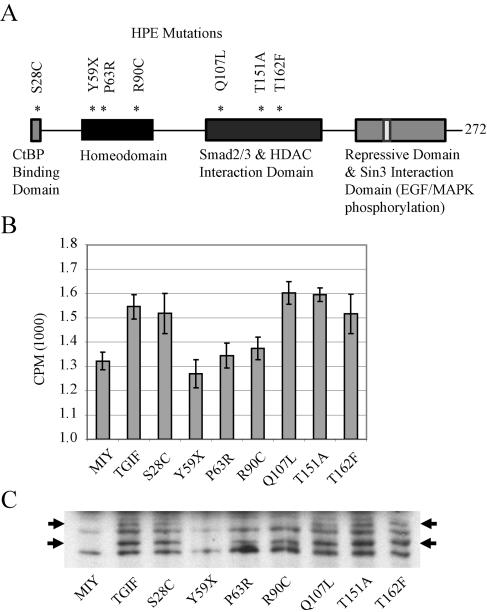FIG. 5.
Expression of a subset of mutated human TGIF rescued the proliferative defect of MEFs. (A) Diagram of HPE patient mutations and their positions relative to the functional domains of TGIF, which were generated in MSCV retroviral constructs. (B) Tgif−/− MEFs were infected with MSCV retroviruses expressing human TGIF and YFP (MIY-TGIF), YFP alone (MIY), or human TGIF containing the patient mutations shown in panel A. Infected cells were enriched by FACS, and DNA synthesis was measured by [3H]thymidine incorporation as described in the text. Expression of human TGIF restored the proliferation rate of mutant MEFs to normal levels. Mutations affecting the homeodomain were unable to rescue the proliferative defect. Representative results from five experiments are shown; each experiment was performed in sextuplicate using cells derived from independent Tgif−/− embryos. Error bars represent standard deviations of the means. CPM, counts per minute. (C) Tgif−/− MEFs were infected with MSCV retroviral constructs containing flag-tagged TGIF as described in the text. Western blot analysis of MEF cell extracts showed similar expression levels for all mutant proteins. TGIF generally migrated as a doublet of 30 to 32 kDa; the upper band likely represents the phosphorylated form.

